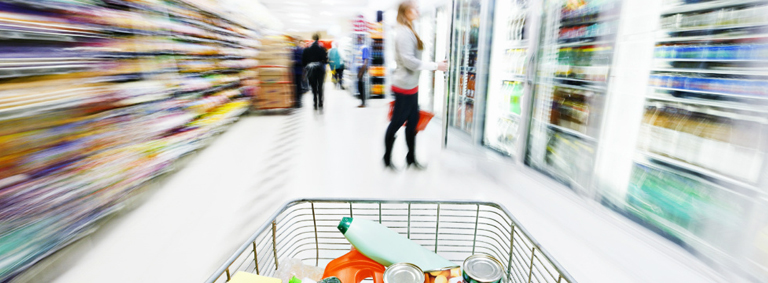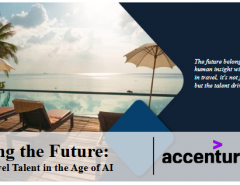India is at a very exciting juncture in its history. If we play our cards well by 2030 we could move up from being a 2.5 trillion dollar economy today to a 6-8 trillion dollar economy. If we replicate what China did over a 30 year period then it would be plausible to believe that we could be a 10 trillion dollar economy. Our size today is what US was in 1980 and China in the beginning of this millennium. India is a consumption driven economy with private consumption at 60%. None of the FMCG categories in the country can be labelled as saturated. The per capita consumption of FMCG categories in India is half that of Indonesia and one fourth of China. There are very few places in the world which offer as much opportunity for FMCG as India does.
With the changing socio-economic landscape, consumers in India are constantly evolving and a new wave of people is entering the consumption cycle. Consumers lead every business – be it FMCG, consumer durables, housing or any other business– consumers lie at the heart of every winning business. In India, we are witnessing a decent increase in the earning power of consumers at the bottom-of-the-pyramid as they join the increasing middle-class population in India. The consumer journeys are changing dramatically. The urban middle-class consumers are changing the way they shop and buy. These consumers are researching brands and products, comparing prices across multiple locations and are open to ordering from anywhere, anytime. They are ready to try new products and services and are willing to spend on brands that match their aspirations.
What are the big themes which will impact our industry?
The first is technology: FMCG industry in India will not be immune to the technological disruptions happening around us. New business models have a potential to create immense value from changing eco-systems. If we take a look around the world, many of the billion-dollar companies today did not exist a decade ago. The average age of a company listed on the S&P 500 has fallen to less than 20 years. The disruption is dramatic – a wired phone took almost 75 years to reach 50 million users, while Pokémon Go achieved it in under a month. Ubiquity of data, access to cheaper and smarter phones, burgeoning digital connectivity and access to information in real-time is now providing opportunities to target consumers with precision and provide instantaneous and personalised products, services and solutions. The changing landscape will impact the FMCG industry not just in the way we market our products, but also the way we make and distribute it. Disintermediation, digital factories, high level analytics, robotisation will take centre-stage. The future of business is already visible, just that it’s not widely recognised yet. Technology is re-shaping the way brands engage with consumers. There is a blurring of lines between advertising and editorial; between ‘paid’ media in conventional channels and ‘owned’ and ’earned’ media in emerging digital channels. Social media is increasingly becoming an important communication vehicle for reaching out to consumers in every part of the world.
In this context, it is imperative for companies to reimagine and transform their traditional beliefs, vision, thinking, processes and business models. The incumbents will no longer enjoy the immunity or the power they once did.
The second is innovation: Innovation will remain the life blood of FMCG industry. This is not only about making a new product or inventing something; it is also about looking at the ordinary and seeing the extra-ordinary. It could be about redefining a product or re-imagining how it is delivered to the consumer. Today, the innovators are attacking the pain points of the existing business models and are able to wean away the consumers by offering frictionless experience at a much lower cost.
The sweet spot of an innovation is solving a problem or meeting the unmet needs of the consumers, based on capabilities or technology which is distinctive and hard to replicate and where the innovator can appropriate a large part of the value chain, best captured by the network impact in the digitised world. However, if the disruptor is unable to replace the incumbent quickly and decisively or sustain the momentum, the disruption may turn out to be a brief phenomenon as we often see in the FMCG sector. The winner is not always who goes first but who does it better.
The third is about purpose: Today, the expectations of consumers and society from businesses are changing. Consumers demand better products and services at lower costs, and society has little tolerance for the pursuance of the bottom line at the expense of all else. Sustainability is no longer a ‘nice to do’ but a ‘must do’ theme. The cost of ‘not doing’ exceeds the cost of ‘doing’. India has the largest pool of millennials. The current generation of millennials is far more conscious about the company behind the brands which are marketed to them. They want to know the company and its purpose. And then they reward it by buying more of their brands.
In today’s trust deficit world, it is very important for the consumers to relate to the purpose and values of the company and a leader plays a critical role in setting that tone. In a survey carried out by Unilever, a third of the consumers are now choosing brands that they believe are doing social and environmental good. More than one in five of the people surveyed said they would actively choose brands if they made their sustainability credentials clearer on their packaging and in their marketing. A responsible business is all about creating shared value and not just sharing created value. When purpose leads, profits follow.
The fourth is about leadership: In today’s world, the threat of disruption keeps the management on their toes. It is no longer that the big will beat the small but you need an agile management which can adjust quickly to a new reality and a resilient team which can bounce back from setbacks. With every challenge, there is also an opportunity. In times like these, it is important for a leader to be a brutal optimist. Leaders must recognise and anticipate the changes happening around them and how it could disrupt their business models but at the same time, provide the direction and lead the change within. Some traits of leadership are timeless such as being trustworthy, inspirational, providing strategic clarity, etc. But then there are nuances of leadership which ought to change with the times.
The days of command and control – the days of hierarchy – are long gone. There is a need to have flatter structures because it brings in speed and agility in the company. Resilience is another vital trait for a leader. Today’s leaders are bound to fail more often not because they are less smart but because of the speed and intensity of changes. Failure is not the opposite of success, so long as we learn from it and don’t repeat it. Success lies in how quickly you bounce back from failures.
The author is Chairman, FICCI FMCG Committee and Chairman & Managing Director, Hindustan Unilever Limited.






the information you provided is very useful to me and i want to share this with my friends.